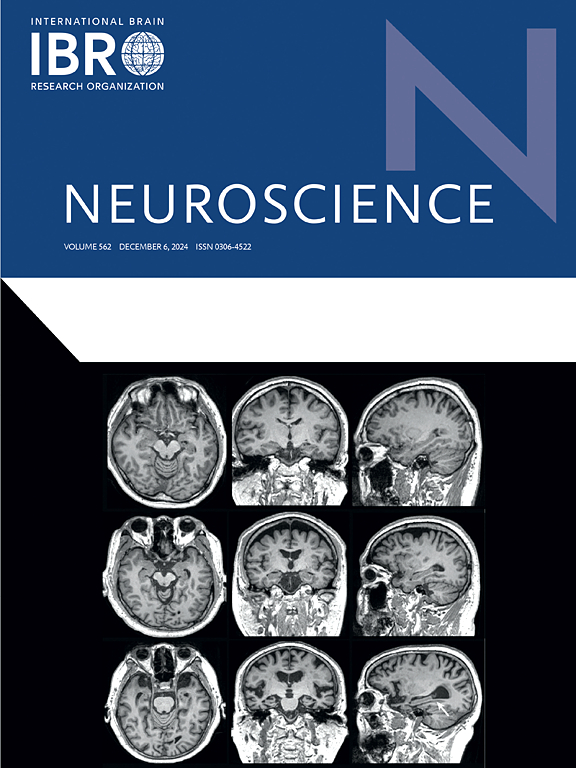Plasma lipidome and intracranial aneurysms: A univariable and multivariable Mendelian randomization study
IF 2.9
3区 医学
Q2 NEUROSCIENCES
引用次数: 0
Abstract
Background
Recent studies suggest that plasma lipids, including lipoproteins and fatty acids, may contribute to the pathogenesis of intracranial aneurysms (IAs). However, the relationship between a broader range of plasma lipids and IA risk remains unclear. This study uses the Mendelian randomization (MR) approach to explore the causal relationships between 179 plasma lipids and the risk of IAs.
Methods
We used summary statistics from a study of 7174 individuals to examine 179 plasma lipids. Data on IAs and aneurysmal subarachnoid hemorrhage (aSAH) were drawn from a study by Bakker MK et al., which included 2070 cases of unruptured IAs, 5 140 cases of aSAH, and 71,934 controls. MR analyses were conducted using inverse variance-weighted as the primary method, with weighted median, weighted mode, and MR-Egger as additional methods. To prioritize lipid risk factors, we applied multivariable Mendelian randomization–Bayesian model averaging.
Results
We identified 5 plasma lipids associated with IAs and 4 with aSAH. Phosphatidylcholine (14:0_18:2) was significantly associated with both IAs and aSAH, with odds ratios of 1.44 (95 % confidence interval [CI] 1.17–1.77, Padjusted = 0.036) for IAs and 1.53 (95 % CI 1.20–1.94, Padjusted = 0.036) for aSAH. In multivariable MR, phosphatidylcholine (14:0_18:2) and phosphatidylcholine (18:0_20:3) emerged as the strongest risk factors for IAs and aSAH, respectively.
Conclusion
Our study identifies specific plasma lipids, particularly phosphatidylcholine (14:0_18:2) and phosphatidylcholine (18:0_20:3), as significant risk factors for IAs and aSAH. These findings suggest that phosphatidylcholines could serve as predictive biomarkers for aneurysm risk. Further research is needed to validate these associations and clarify the underlying mechanisms.
血浆脂质体与颅内动脉瘤:单变量和多变量孟德尔随机化研究。
背景:最近的研究表明,血浆脂质,包括脂蛋白和脂肪酸,可能与颅内动脉瘤(IAs)的发病有关。然而,更大范围的血浆脂质与IA风险之间的关系尚不清楚。本研究采用孟德尔随机化(MR)方法探讨179种血浆脂质与IAs风险之间的因果关系。方法:我们采用一项来自7174人的研究的汇总统计数据来检测179种血脂。关于IAs和动脉瘤性蛛网膜下腔出血(aSAH)的数据来自Bakker MK等人的一项研究,该研究包括2070例未破裂的IAs, 5140例aSAH和71934例对照。MR分析以反方差加权为主要方法,加权中位数、加权模式和MR- egger作为附加方法。为了确定血脂风险因素的优先级,我们采用了多变量孟德尔随机化-贝叶斯平均模型。结果:我们确定了5种与IAs相关的血脂和4种与aSAH相关的血脂。磷脂酰胆碱(14:0_18:2)与IAs和aSAH均显著相关,IAs的比值比为1.44(95 %置信区间[CI] 1.17-1.77, p调整 = 0.036),aSAH的比值比为1.53(95 % CI 1.20-1.94, p调整 = 0.036)。在多变量MR中,磷脂酰胆碱(14:0 ~ 18:2)和磷脂酰胆碱(18:0 ~ 20:3)分别成为IAs和aSAH的最强危险因素。结论:我们的研究确定了特定的血浆脂质,特别是磷脂酰胆碱(14:0_18:2)和磷脂酰胆碱(18:0_20:3)是IAs和aSAH的重要危险因素。这些发现表明磷脂酰胆碱可以作为动脉瘤风险的预测性生物标志物。需要进一步的研究来验证这些关联并阐明潜在的机制。
本文章由计算机程序翻译,如有差异,请以英文原文为准。
求助全文
约1分钟内获得全文
求助全文
来源期刊

Neuroscience
医学-神经科学
CiteScore
6.20
自引率
0.00%
发文量
394
审稿时长
52 days
期刊介绍:
Neuroscience publishes papers describing the results of original research on any aspect of the scientific study of the nervous system. Any paper, however short, will be considered for publication provided that it reports significant, new and carefully confirmed findings with full experimental details.
 求助内容:
求助内容: 应助结果提醒方式:
应助结果提醒方式:


